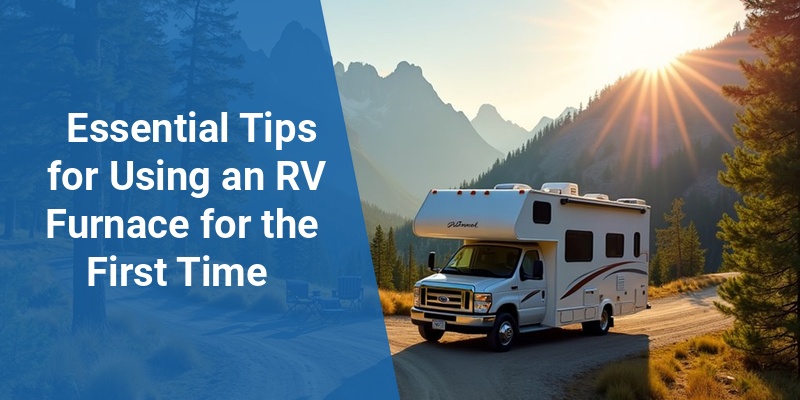Using an RV furnace for the first time can be a bit intimidating, but with the right knowledge, it’s a straightforward way to keep your RV warm and comfortable during chilly adventures. Understanding how to safely operate the furnace, perform basic maintenance, and troubleshoot common issues ensures a cozy travel experience. This guide covers everything from initial setup to safety tips, helping first-time RV owners enjoy reliable heating on the road.
| Topic | Key Points |
|---|---|
| Safety Precautions | Proper ventilation, carbon monoxide detectors, regular inspections |
| Initial Setup | Checking fuel, thermostat settings, pilot light ignition |
| Operating Tips | Maintaining airflow, adjusting temperature, fuel efficiency |
| Maintenance | Cleaning filters, inspecting vent pipes, scheduled servicing |
| Troubleshooting | Ignition problems, uneven heating, unusual odors |
Understanding Your RV Furnace System
An RV furnace is designed to provide efficient heat by burning propane gas, making it ideal for mobile living situations. Most RV furnaces operate on propane and use a thermostat to regulate temperature inside the vehicle. They are compact, built to save space, and feature venting systems that expel exhaust safely outside the RV. Familiarity with your unit’s manual and furnace type (such as forced air or hydronic heating) is essential before starting it for the first time.
Preparing Your RV Furnace for Its First Use
Check the Propane Supply
Before turning on your RV furnace, ensure the propane tank is full and the supply valve is fully open. Propane is the primary fuel, and a low or empty tank will prevent the furnace from igniting or maintaining heat. Check for any leaks by using a soapy water solution around gas connections to spot bubbles indicating a leak.
Inspect and Clean the Furnace Components
Inspect the furnace compartment, vents, and air filters. Remove any debris, dust, or spider webs that may have accumulated while the RV was unused. Clean or replace the air filter if dirty, as proper airflow is critical for efficient heating and preventing damage.
Set Up the Thermostat Properly
Locate the thermostat panel in your RV and program it according to your heating preference. Setting it to “heat” mode and adjusting the temperature slightly above the current room temperature helps trigger the furnace to start. Avoid setting the thermostat too high when first powering on the furnace to allow a gradual warm-up without overworking the system.
How to Safely Ignite and Operate Your RV Furnace
Ignition Process
Most modern RV furnaces have an electronic ignition system eliminating the need for manual lighting. Press the ignition or heat button on your thermostat, listen for the furnace’s fan, and watch for the burner flame through the access panel.
If your model has a pilot light, follow the manufacturer’s instructions to manually light it using a long match or lighter. Ensure the burner flame is steady and blue, indicating proper combustion.
Call 888-906-9139 for Free Local HVAC Quotes – No Obligation, Just Savings!
Ensuring Proper Ventilation
Ventilation is critical for safety when using any propane appliance inside an RV. Make sure all vents, including the exhaust vent pipe on the exterior of the RV, are unobstructed. This prevents dangerous buildup of carbon monoxide, which is odorless and potentially lethal.
Monitor Carbon Monoxide Detectors
Install carbon monoxide detectors near sleeping areas and in the main cabin. Regularly test the detectors to verify they function correctly. These devices alert occupants early if harmful gases build up due to furnace malfunction or poor ventilation.
Maintaining Efficient and Safe Operation
Regular Filter Cleaning and Replacement
Filters should be cleaned or replaced at least once a season. Dirty filters restrict airflow, strain the furnace, reduce heating efficiency, and increase propane consumption.
Inspecting and Cleaning Vents and Exhaust Fans
Check the furnace exhaust vents outside the RV for obstructions such as snow, leaves, or dirt. Clear blockages immediately to maintain proper exhaust flow and prevent dangerous fumes from entering the living space. Also, lubricate and test any exhaust fans ensuring they operate smoothly.
Annual Professional Inspection
A certified RV technician should perform a thorough furnace inspection annually. This includes checking propane pressure, burner condition, electrical components, and ventilation integrity. Professional servicing helps avoid breakdowns and extends the life of the furnace system.
Troubleshooting Common Issues When Using an RV Furnace
Furnace Won’t Ignite
- Check propane supply and valve openings.
- Verify the thermostat is set to heat mode with a temperature above room temperature.
- Inspect and clean the ignition components or pilot light assembly.
Uneven Heating or Weak Warm Air
- Inspect and replace clogged or dirty air filters.
- Ensure vents inside the RV are open and unobstructed.
- Check ductwork for leaks or disconnections.
Unusual Odors or Noises
- Turn off the furnace immediately if you detect a strong propane smell. Check for leaks and never operate until the problem is resolved.
- Buzzing or rattling noises may signal loose motors or worn parts requiring repair.
Tips for Maximizing RV Furnace Efficiency
- Seal windows and doors properly to prevent heat loss.
- Use a programmable thermostat to optimize heating based on occupancy.
- During very cold weather, run the furnace periodically rather than continuously to conserve propane.
- Consider supplemental heating options such as electric heaters during campsite hookups.
